There’s a reason the Cessna 172 Skyhawk is general aviation’s most popular model.

Cessna Aircraft Company has delivered more than 43,000 Cessna 172 airplanes to date. This makes it the best-selling, most widely flown airplane ever built. It also has a reputation for being the safest general aviation aircraft available.
Over the years, its been called many things. Affordable, both for the cost of the plane and cost of flying. Utilitarian, for decent short haul and payload capabilities. Versatile, for its ability to fulfill a variety of roles. The perfect training and instructional plane, for it’s reliable flight characteristics. And just plain fun to fly. In fact, Flying Magazine went so far as to say:
“The Cessna 172 was arguably the most elegant compromise in the history of aviation.”
So where did this golden child of general aviation come from? And how did it become more successful than other aircraft in its class, such as the Beechcraft Musketeer or Piper Cherokee? And what does the future hold for the 172? As with many aircraft, the Cessna 172 has a long and interesting history. Over the past 58 years, the 172 has worked hard to win the trust and admiration of pilots. And along the way, it picked up the name ‘Skyhawk’. The Cessna 172 even played a key part in setting an unbelievable world record.
The Cessna 172 Arrives on the Scene
It’s 1955, late on a summer night. Four of Cessna’s chief engineers are gathered around a set of airplane plans. They are excitedly discussing the new design they’ve just finalized. They’re assigning it the number 172, and calling it the ‘Skyhawk‘. The engineers congratulate each other on their brilliant, inspired design. The next day, the design is approved by the board. Production is to begin as soon as possible.
…
OK, so that didn’t actually happen. But it’s what you expect when talking about something as celebrated as the Cessna 172. Obviously, this best-selling aircraft of all time was realized in a flash of insight and genius, right? Well, not really. The Cessna 172 started life as a variant to the Cessna 170, which was a taildragger.
In January 1955, Cessna started test flying an improved variant of the 1701, called the 170C. It was powered by a 145 hp Continental O-300-A engine. And it had larger elevators and a more angular tail-fin. Although the variant was certified with these changes, Cessna still felt like it wasn’t quite there.
So they modified it again, changing from a conventional landing gear to a tricycle landing gear configuration. With this new modification, Cessna decided it was different enough to have its own model number. And so the 170C became the 172. The 172 went through test flights and certifications in June 1955.
Cessna quickly started building 172s. They delivered the first production models in 1956, with a price tag of $8,995. It was popular almost immediately. To keep up with demand, Cessna built 4,195 172 aircraft over the next five years. They built over 1400 in 1956 alone. The Cessna 172 debuted with the following specs:
Original Model Cessna 172 Specs
Maximum Speed: 131 MPH
Cruise Speed: 125 MPH / 491 SM / 3.9 HRS
Vne (Never Exceed Speed): 160 MPH
Rate of Climb at Sea Level: 660 FPM
Service Ceiling: 15,100 Feet
Takeoff Performance
Ground Roll: 725 Feet
Total Distance over 50-FT Obstacle: 1650 Feet
Landing Performance
Ground Roll: 680 Feet
Total Distance over 50-FT Obstacle: 1115 Feet
Stall Speed (KCAS)
Flaps Up, Power Off: 58 MPH
Flaps Down, Power Off: 52 MPH
Gross Weight: 2200 Pounds
Standard Empty Weight: 1290 Pounds
Useful Load: 910 Pounds
Baggage Allowance: 120 Pounds
Wing Loading: 12.6 Pounds/Sq.Ft.
Power Loading:15.1 Pounds/HP
Fuel Capacity (Total): 39 Gallons
Oil Capacity: 8 Quarts
Engine: Continental O-300 / 145hp
Propeller: 76 Inch (diameter) / Fixed Pitch
Electrical System: 14-volt with Generator
Wingspan: 36 Feet
The Cessna 172 Helps Set a World Record for Flight Endurance
A mere two years after it was released, the Cessna 172 played a key role in helping to set a world record. Twice. The record was for manned, refueled flight endurance. Basically, how long can you stay in the air before you decide or are forced to land. Refueling is done while flying. There can be multiple pilots, but they all must remain in the aircraft for the duration of the flight.
This record really took off starting in 1923. Aerial refueling had become refined enough to allow aircraft to exceed the non-refueled endurance records. The first record, 1 day, 13 hours, and 15 minutes, was set in August of 1923, by two US Army Service pilots. After that, the record was broken and reset another 11 times. In 1949, a pair of US Navy pilots stayed in the air for an incredible 46 days and 20 hours. That record stood for 9 years until the Cessna 172 showed up on the scene.
In August of 1958, Jim Heth and Bill Burkhart took to the skies over Dallas, Texas. They were flying their Cessna 172, dubbed ‘The Old Scotchman‘. They stayed in the air for 50 days, handily sailing by the previous record. However, their record-setting flight only held the title for a few months.
A new bid was being prepared further west, in the dusty Nevada deserts. An enterprising Las Vegas businessman had just built the Hacienda, a family friendly casino. And he needed a good idea to promote it. One of his slot machine mechanics, who was also a pilot, gave him that idea. Why not sponsor an attempt to break the flight endurance record?
So on December 4, 1958, Robert Timm and John Cook left the ground. They were flying a modified Cessna 172, dubbed ‘The Hacienda‘. After blowing past the fifty-day mark, they decided to stay in the air as long as they could. They wanted to make it as hard as possible for anybody else to take the record from them.
64 days, 22 hours and 19 minutes after they lifted off, Timm and Cook finally landed. Their extra efforts appear to have paid off, as their record still stands today. Timm and Cook’s flight of the Hacienda is a fascinating story, full of amazing details. But it is, as they say, a story for another time.
Cessna 172 Variants and the Skyhawk
Over the years, Cessna has released at least 18 variants, or updated Cessna 172 models. These models have introduced many small adjustments and changes. They started with the 172A model in 1960, adding a swept back tail fin and rudder and float fittings.
And though everyone knows the Cessna 172 as the ‘Skyhawk’ today, that name didn’t come into use until late 1960. Cessna was prepping the 1961 model, the 172B. They wanted to offer a ‘deluxe’ option. It would include full exterior paint instead of the standard partial paint stripes and enhanced avionics. The deluxe model was dubbed the Cessna 172 Skyhawk. And from that point on, Cessna 172 and Skyhawk basically became inseparable2.
1963 saw the release of the 172D. This model had a lower rear fuselage, one piece windshield, and a wraparound rear window Cessna dubbed ‘Omni-Vision’. Cessna also built its 50,000th aircraft in 1963, which just happened to be a 172. The 172F in 1965 introduced electric flaps, replacing the previous lever-operated system. In 1968, Cessna canceled its contract with Continental and turned instead to Lycoming Engines.
The 172I became the first 172 to sport the new Lycoming O-320-E2D 150 hp engine. And so production of 172s continued, with a new model every 2 – 3 years, until 1986. Cessna’s primary production model was now the 172Q, dubbed the ‘Cutlass’. But it was to be their last 172 model for over a decade.
Legal liability rulings in the US started pushing Cessna’s insurance costs too high. So they shut down manufacturing of single engine aircraft in 1986. In 1994, hope appeared on the horizon in the form of the ‘General Aviation Revitalization Act‘. This legislation served to reduce the liability faced by aircraft manufacturers. There is some debate on how much overall effect it actually had on aircraft manufacturing. However, Cessna was able to resume production on three of their single-engine aircraft: the 172, 182 and 206.
With bold promises from Cessna that they had built the best Skyhawk yet, the 172R was released in 1996. It had many interior improvements, such as better soundproofing, a multi-level ventilation system and a standard four point intercom. The 172R was also the first 172 to sport a factory fitted, fuel injected engine, the 160 hp Lycoming IO-360-L2A.
Two years later, Cessna released the 172S. They changed out the engine for a 180 hp Lycoming IO-360-L2A. This model has stayed Cessna’s primary production model since 1998. Starting in 2007, the 172S began coming standard with the Garmin G1000 avionics package, and leather seats. With a $307,500 price tag, I suppose leather seats should come standard. As of 2009, the Cessna 172S Skyhawk is the only 172 model in active production. Here are the current 172S specs, according to the Cessna website:
Cessna 172S Specs
Dimensions
Length: 27 ft 2 in (8.28 m)
Height: 8 ft 11 in (2.72 m)
Wingspan: 36 ft 1 in (11.00 m)
Wing Area: 174 sq ft (16 sq m)
Wheelbase: 5 ft 5 in (1.65 m)
Cabin Interior
Height: 48 in (1.22 m)
Width: 40 in (1.00 m)
Length: 11 ft 10 in (3.61 m)
Maximum Passengers: 4
Baggage Capacity
Weight: 120 lb (54 kg)
Volume: 30 cu ft (0.85 cu m)
Weights
Maximum Ramp Weight: 2,558 lb (1,160 kg)
Maximum Takeoff Weight: 2,550 lb (1,157 kg)
Maximum Landing Weight: 2,550 lb (1,157 kg)
Usable Fuel Capacity
Weight: 318 lb (144 kg)
Volume: 53 gal (201 l)
Basic Operating Weight: 1,641 lb (744 kg)
Useful Load: 917 lb (416 kg)
Maximum Payload: 909 lb (412 kg)
Full Fuel Payload: 599 lb (272 kg)
Performance
Maximum Cruise Speed: 124 ktas (142 mp/h, 230 km/h)
Maximum Range: 640 nm (736 m, 1185 km)
Takeoff
Takeoff Distance: 1,630 ft (497 m)
Ground Roll: 960 ft (293 m)
Landing
Landing Distance: 1,335 ft (407 m)
Ground Roll: 575 ft (175 m)
Maximum Operating Altitude: 14,000 ft (4,267 m)
Maximum Climb Rate: 730 fpm (223 mpm)
Maximum Limit Speed: 163 kias (187 m/h, 302 km/h)
Stall Speed: 48 kcas (55 m/h, 89 km/h)
Powerplant
Manufacturer: Textron Lycoming
Model: (1) IO-360-L2A
Power Output: 180 hp
Propeller
Manufacturer: McCauley
Description: 2-blade metal, fixed pitch
A Cessna 172 Trainer for Military Use
In 1964, the US Air Force decided that they wanted to start using the standard Cessna 172F as a trainer aircraft for student pilots, rather than starting them off in the T-37 jet trainer. So the USAF purchased 207 172F aircraft from Cessna. These military 172s were designated the Cessna T-41A Mescalero. The first class of USAF students started their training with the T-41 on August 1965 in Big Springs, TX.
A couple of years later, Cessna provided the US Army with the T-42B. This was the first model designed specifically for the military. It replaced the 145 hp Continental O-300 engine and fixed-pitch propeller of the T-41A (or 172F) with a 210 hp (!) Continental IO-360 engine and constant speed propeller. 250 of these higher powered trainer aircraft were built.
In 1968, the USAF decided they needed the extra power, and ordered another 52 trainers. These trainers, designated the T-41C, had the same 210 hp engine as the T-41B. Finally, in 1996, the T-41 series produced one final model, the T-41D. It came with upgraded avionics and a constant speed propeller.
Many international air forces, including Austria, Greece, Singapore, and Chile, purchased various civilian models of the the Cessna 172. These were used in military training, transport, and liasion roles. The US Military also exported a number of T-41 variants to friendly nations under the Military Assistance Program. Today, most of these aircraft are not only in good condition but remain in active service with most militaries.
Cessna T-41C Mescalero Specs
General characteristics
Crew: one or two
Length: 26 ft 11 in (8.21 m)
Wingspan: 35 ft 10 in (10.92 m)
Height: 8 ft 10 in (2.69 m)
Wing area: 159 ft² (14.8 m²)
Empty weight: 1,363 lb (618 kg)
Loaded weight: 2,500 lb (1,134 kg)
Powerplant: 1 × Continental IO-360-D, 210 hp (160 kW)
Performance
Maximum speed: 125 knots (144 mph, 232 km/h)
Range: 626 nm (720 mi, 1,159 km)
Service ceiling: 17,000 ft (5,180 m)
Rate of climb: 880 ft/min (4.47 m/s)
A Mechanic’s Perspective on the Cessna 172

With over 43,000 Cessna 172s produced, not many A&P mechanics who work in general aviation have not had their hands on one. This aircraft has certainly stood the test of time. And it has been the source of enjoyment and satisfaction for hundreds of thousands of folks over the years. The Cessna 172 has taught a lot to people to fly, and probably more people to fly instruments than any other aircraft.
I have worked on hundreds of them over the years. Some were owned by private pilots who use them for fun and enjoyment. My friend Steve flies a vintage 1956 model. He loves the simple and pure freedoms of flight when he’s not busy flying big jets for an airline. Others were old work horses serving as trainers at busy flight schools. They’re being used constantly by those learning to fly or improve their skills in instrument training. And still others flew endless hours, following busy metropolitan freeways with a radio reporter. These traffic planes would offer advice to motorists looking for shortcuts.
Some of these Cessna 172s have had as few as 1,500 hours on the airframe. Others had upwards of 25,000 hours. I often wonder if the engineers at Cessna ever imagined that these airplanes would still be bouncing through the skies after so many hours and years.
Those who research the purchase of their first aircraft often give consideration to a Cessna 172. This is because of its simplicity, moderate entry fee, affordable insurance and lower maintenance costs.
These aircraft really can be quite affordable to own. You just need to be careful about making the right choice during your purchase. Find an aircraft that has been flying regularly, and has had good routine maintenance. This will help keep your costs more predictable. At least at first.
There are a few fixed cost items that go along with aircraft ownership, like insurance, hangar fees and annual inspection costs. My purpose, however, is to talk more about the maintenance and repair aspect of the Cessna 172. Cessna did an amazing job creating an aircraft that is relatively easy to work on, trouble free and reliable. But, just like any other aircraft, they do require good care and keeping. Regular, routine maintenance by qualified mechanics will keep these machines in good working order.
The differences in the older vs. newer model aircraft are minimal in terms of airframe construction. Airframe maintenance practices are very similar between all the models. Mainly, the newer ones have more creature comforts and sophistication, with improved radios and instrumentation.
As we begin to consider cost to maintain these aircraft, the bigger differences will be mostly found in the engines. The Continental engines found in the early model Cessna 172 will generally cost slightly more to maintain and overhaul. These are 6 cylinder engines and have more potential for wear in the valve train. One reason these engines are a little more expensive to overhaul is due to the fact they have two additional cylinders to install. They are also more likely to leak oil and less likely to have cylinders last through the entire life of the engine. Continental engines generally have more cylinder problems as the engines accumulate more hours, especially over the 1000 hour mark. At $1200- $1600 per change, most people’s wallets are strained. The engines are also older with less available spares. Over time, these parts will likely be harder and harder to find. And with only 145 horsepower, these earlier aircraft may seem a little anemic in the summer or at higher altitude airports. Care should be exercised when flying in these conditions. That being said, they are good running engines overall and have proven the test of time.
When Cessna introduced the Lycoming power plants into the 172 series, it increased the horsepower. But it also made the Cessna 172 more efficient and cost effective. The O-320-E2D was solid, and many aircraft were sold with this engine. Most would agree that the Lycoming O-320 series are overall better engines than the O-300 made by Continental. And the installation of them was a definite improvement on this already successful aircraft.
While some people might debate whether or not that statement is true, no one would debate this next one. Beginning in 1977, the installation of the O-320-H2AD engines in the Cessna 172 was nothing short of a disaster. These engines, although 10 horsepower higher than their predecessor, were a new and different design. And they were problematic from the beginning. These engines suffered serious camshaft and lifter problems. This caused not only poor performance, but many times sent metal particles through the oil system. This resulted in excessive wear and engine failures. Without going into detail about all reasons why, I will just say the FAA issued several airworthiness directives to address the problem. Lycoming also came up with some recommended modifications, and solutions to the problems were soon found.
Today, in my opinion, these engines are nearly as good and reliable as any of the other Lycoming engines. The main reason I say they are “nearly” as good is because they have one other unfavorable condition. This is something they share with a few other Lycoming engines. They have what is often called a “dual mag”. This two-in-one ignition system has the components of two magnetos housed in one unit, driven by a common gear. It works well as long as everything is set up properly and precisely. And that is just the problem. They are complex, intricate and require a knowledgeable and skilled technician to set them up properly. The engine itself has only one location for a magneto to be installed, and therefore can only ever be operated with one of these dual magnetos. If the timing slips on either magneto on these dual units, the entire assembly must be removed from the engine. Then, they must be re-timed on a bench, by adjusting the points inside the magneto. It is a difficult and sensitive job, and one which many mechanics are unfamiliar with. That being said, when properly maintained and set, these dual mags seem to do well.
Once again, I will argue that these are good engines, with some peculiarities that will need patience and determination. If you can deal with this, you may find a good deal in purchasing an aircraft with one of these engines. However, I highly encourage making certain the modifications recommended by Lycoming have already been completed on the engine.
Later, in 1981, the Cessna 172 came standard with a different model Lycoming engine. The new engine had the same 160 horsepower. But these engines returned to the traditional design of mainstream Lycomings, and have been very reliable powerplants for the aircraft.
Later model aircraft had 180 horsepower engines installed, and again have had very good luck with them.
Maintenance issues surrounding the Cessna 172 are largely no different than other fixed gear single engine aircraft. Except that they seem to have less problems if they are kept up. But like other Cessna singles, they do have some pesky nuisance problems that plague owners. For example, excessive nose wheel shimmy, and cowl vibrations that take out landing lights. Thankfully, there are factory and aftermarket modifications available to help. You can get improved shimmy dampers and alterations for wing mounted landing lights, as well as LED light options.
I think the Cessna 172 was a masterpiece design from the beginning. And a new pilot can’t go wrong choosing one of these models to learn to fly, or build his flight time in.
Modifications and the Cessna 172
The list of modifications on 172s is long and varied. And, like any other aircraft, searchers can find upgrades in the form of supplemental type certificates (STC) for most anything out there. Since the Cessna 172 is such a prevalent aircraft, approvals have been already completed for most any STC.
Engine upgrade STCs are a favorite modification to 172s. Many earlier model aircraft have had 180 horsepower engines installed. Some with fixed pitch propellers, others with constant speed props. This increases the fuel consumption from around 8 gallons per hour to about 10. But, it also wakes the airplane up on take off and helps make it more capable of carrying additional weight at higher altitude airports. If you are considering the purchase of a 172 and operate at higher density altitudes, or want to operate in moderate back country environments, you should look into this option. If you are shopping, it is usually more affordable to find one already converted. This is still the case even if you have to do some fix up on it. Check Airplanes.com and Penn Yan Aero for more information.
Inertial reel shoulder harnesses are a great upgrade. The original lap belts on early aircraft are inadequate. And the factory shoulder harness on the 70s and 80s vintage aircraft are uncomfortable and the shoulder belt comes unlatched easily. BAS makes a very nice, comfortable and safe inertial harness.
Another upgrade to consider is the replacement of the wing root air vents. The factory vents leak and are hard to control the amount of air coming in. Two options that come to mind. One, an inexpensive plastic vent offered by Plane Plastics called “ventubes”, and the other, more expensive but much nicer quality by Precise Flow.
Skybolt makes a modification for cowling fasteners that is quite good. It replaces the troublesome small fasteners on the cowling with larger “camlocks”. These are much easier to deal with and are more secure.
Powerflow makes modified tuned exhaust systems that are advertised to improve efficiency and performance. I have not had personal experience with these, but have received reports from customers that they are very effective.
If you want to operate on unimproved landing strips in the backcountry, you may look into installing larger tires on your Cessna 172. 600 X 6 on the nose and perhaps 700 X 6 on the mains. This will require the installation of a heavy duty nose fork and a larger 6 inch wheel and axle assembly. Parts can be a little hard to find, but salvage yards occasionally get them and may be able to help you. A field approval will have to be obtained for this modification, and you should approach your mechanic for help in moving in this direction.
There is a list as long as your arm of things you can do to your Cessna 172. Strobes, LEDs, autopilots, fancy navigation and communication radios, speed fairings, flap gap seals, STOL kits, CO2 monitors, GPS and on and on. Pick the ones that seem appropriate for the mission your aircraft performs. However, here’s one thing to remember about modifying your Cessna 172. These aircraft do well unaltered, and you can spend immeasurable amounts of money purchasing and installing these modifications. Sometimes, you need to save some money for fuel.
The Future of the Cessna 172

So, what does the future hold for the 172? Diesel and electric. Well, maybe. On October 4 2007, Cessna announced that it was planning on building a diesel powered Skyhawk. It would be called the Cessna 172 Skyhawk TD (Turbo Diesel).
Engine manufacturer Thielert was going to provide the engine: the Thielert Centurion 2.0. However, in July 2013, Cessna canceled the model. Thielert had gone bankrupt and was sold to Continental Motors.
A year later, in July 2014, Cessna announced they were preparing to bring a new diesel model to market in 2015, the Turbo Skyhawk JT-A. It will be powered by a 155 hp Continental CD-155 diesel engine that runs on jet-A fuel. With a top speed of 131 knots, it will be slightly faster than the Cessna 172S. It will also burn 3 gallons per hour less fuel than the standard 172. The initial price has been set at $435,000.
In July 2010, Cessna announced that they were developing an electrically powered 172 with Bye Energy (who later changed their name to Beyond Aviation.) In July 2011, Beyond Aviation started taxi tests. The following year, in March, they had several successful test flight with a prototype that used Panacis batteries. But after that, nothing. The project hit some kind of road block. On the Beyond Aviation website, they offer only this cryptic message:
“This is an archive of the goals of the Beyond Aviation project. Because of issues, the project had to shut down. We hope to see the restoration of this program and the creation of the first fully electric plane.”
I can only hope the project is restored. I would love to see them complete a fully electric 172.
To me, it appears that the Cessna 172 Skyhawk has enjoyed such longevity and success because it is a solid choice for a variety of tasks. It may not be as sexy as some airplanes, or as powerful as others, but it generally gets the job done. Hopefully, the Cessna 172 Skyhawk continues to be built and enjoyed for a long time to come.
For those interested, Amazon offers some great options for 172 models.
————
1 – The 170 was itself a four-seat variant of the Cessna 140.
2 – Technically, you could argue that the 172 and the Skyhawk refer to different aircraft. The Cessna 172 is the base model and Skyhawk in the deluxe model. But for most people, Cessna 172 and Skyhawk are one and the same.






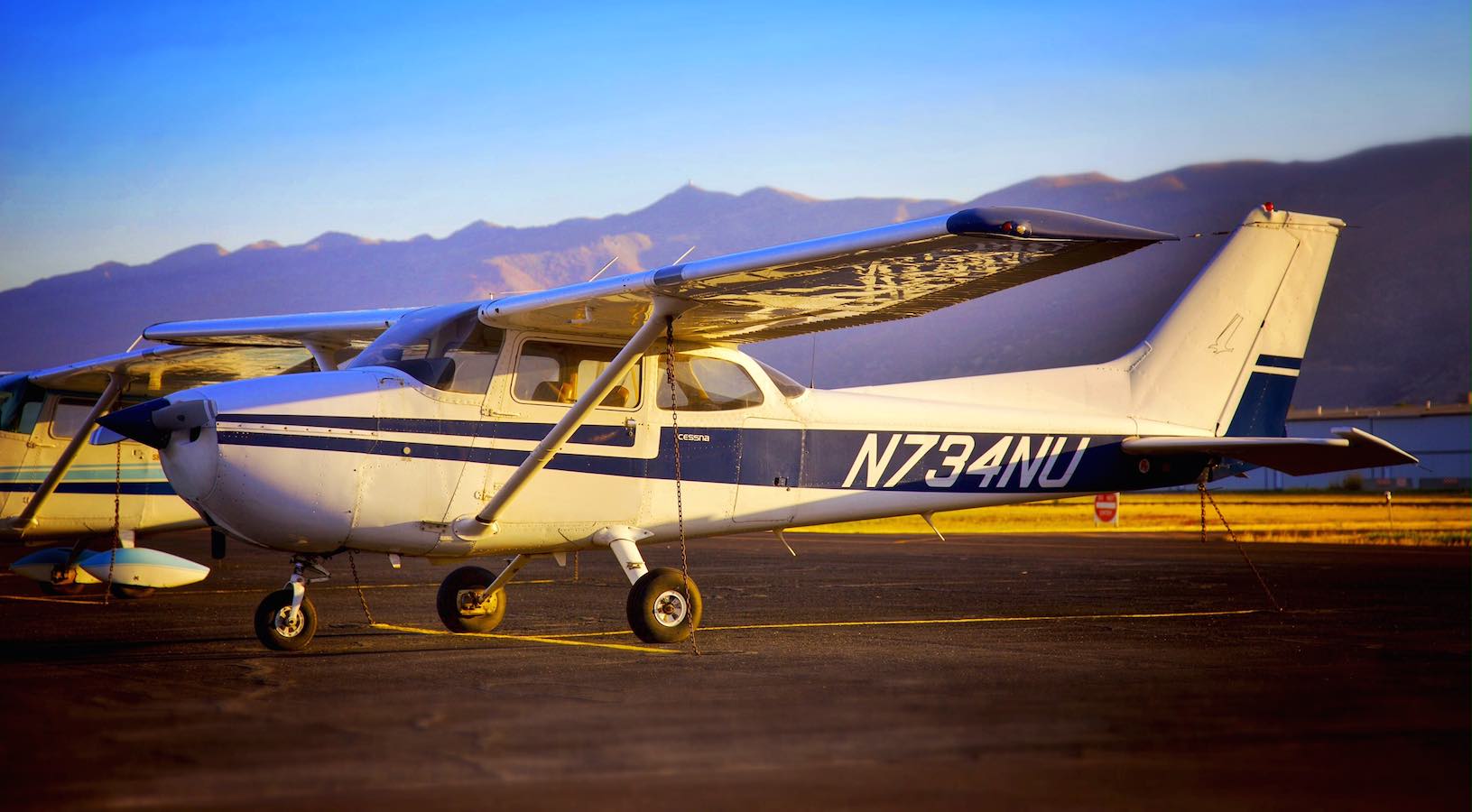

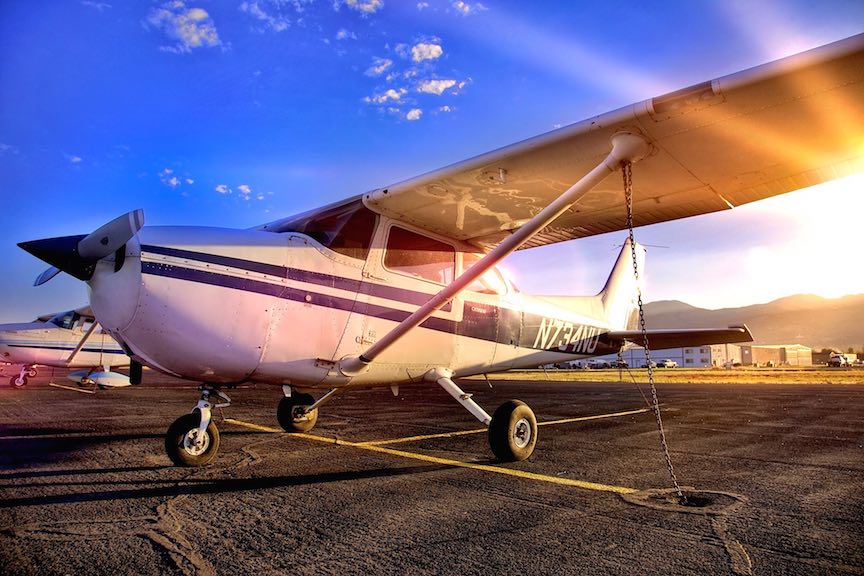



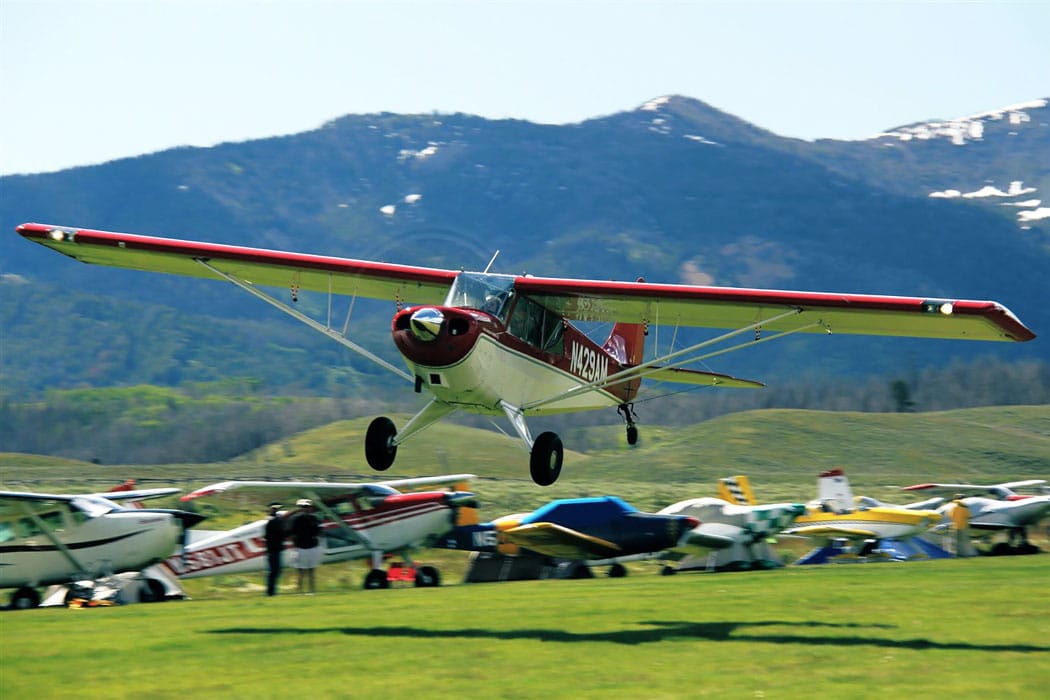
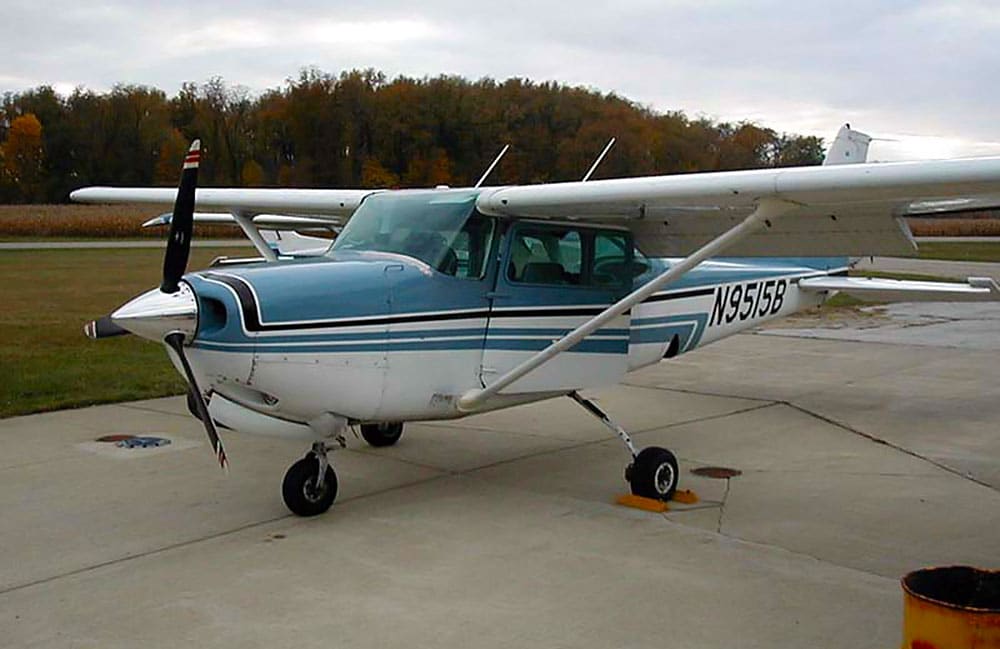

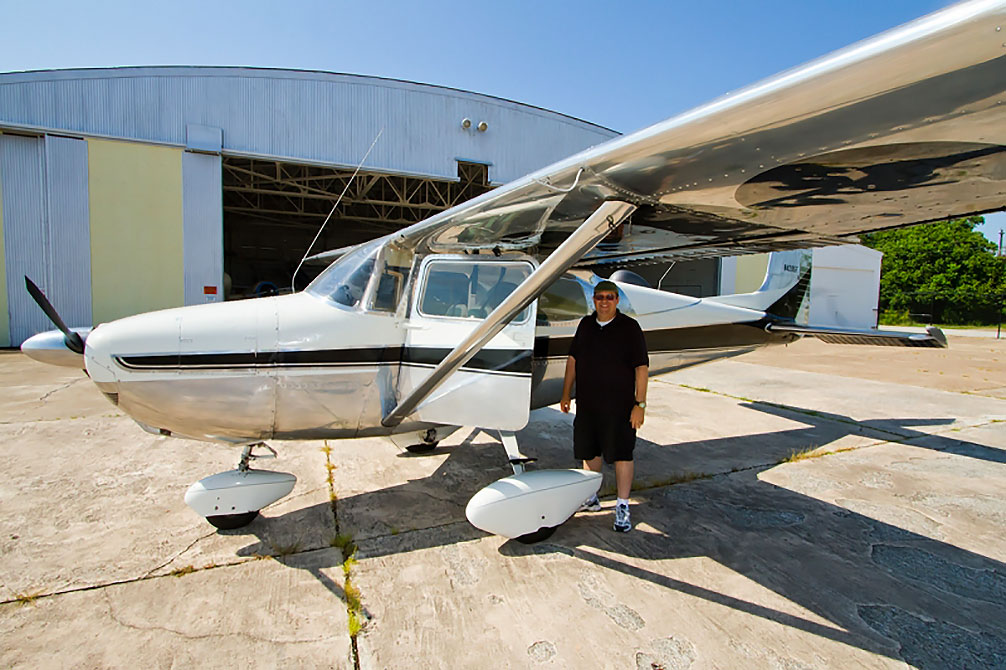
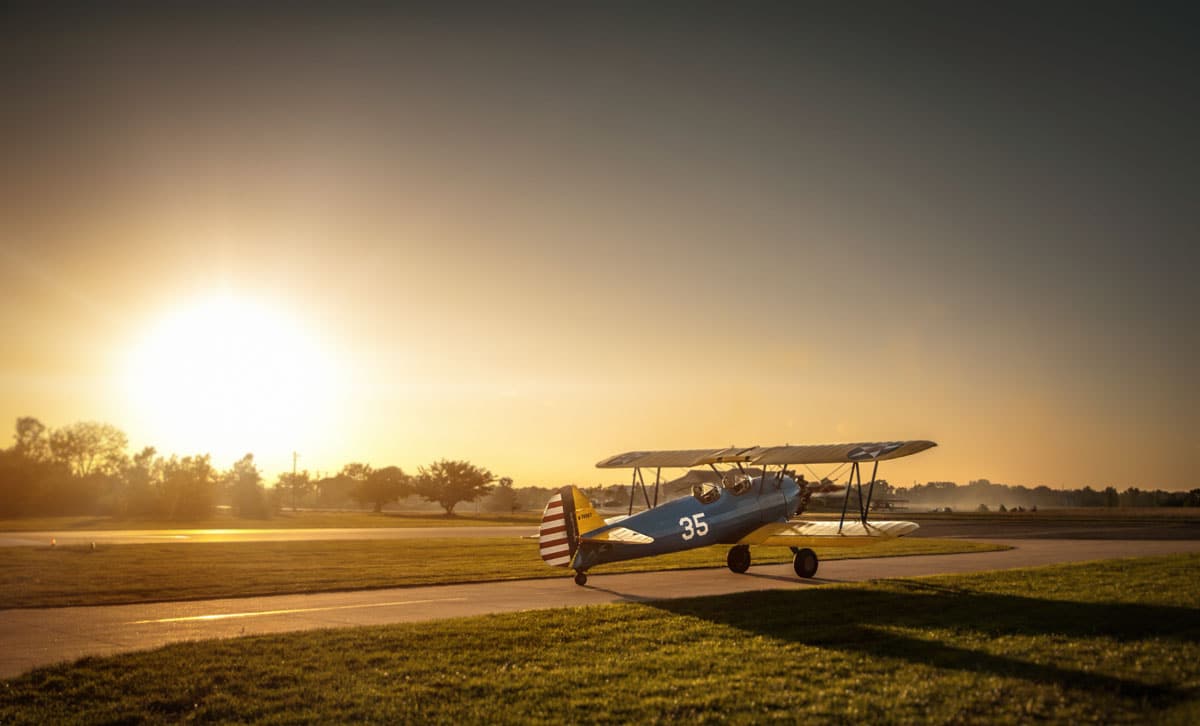
Excellent Skyhawk article! Forgot to mention the military version (T-41) though, which is a C-172F without keys and with Air Force-type, round fuel indicators. They are still being used for basic training at the Hellenic Air Force Academy, before moving on to the T-6 Texan. They started flying in 1969 and haven’t stopped since. Regarding STC’s, if you live in “GA-phobic” Europe, you know fuel is a major issue. MOGAS has saved our PPL(A)’s! Don’t know about other engines, but the -D2J runs like a dream on it. This is is a great plane that just won’t die and I love it for this!!!
Dimitrios,
That’s awesome to hear about the Skyhawk’s continued presence in Europe. And thank you for the mention of the T-41 military version. I’m definitely going to update the article with that information.
very good…i like your post..very interesting..thanks men.!! 🙂
Something to note, the last Cessna 172s/T-41s in active U.S. military service are four T-41Ds being used in intercollegiate NIFA flying competitions by the USAF Academy Precision Flying Team. Airframes are 1967 and generally have over 15,000 hours on them. A number of USAF Aero Clubs, especially high-altitude ones, still use the old T-41B and C model aircraft that were the primary trainer for USAF Academy cadets until the Cirrus SR22 replaced them in the 2000s.
Interesting. Thank you for sharing this info regarding the US Military C172/T-41s.
My first airplane was a Cessna 172. I had the 180hp upgrade and had enjoyed hat airplane for a couple years before selling it to a flight school and moving into a bigger aircraft. I still miss that airplane. My Skyhawk had 19000 hours on the airframe but ran like a champ. A good first airplane for anyone thinking of owning. Thumbs up C172
wing weight ?
how much would JUST the wing weigh ?
i guess 400 pounds
Thanks for this informative article.
I was looking to learn more about the wing design change Cessna did.
Any effects it had on stall or spin from the original 1956 172 wing?
Differences in slow flight, final approaches, crosswind?
I found it real interesting about the electric motor conversion. I think FARs stalled it.
Great article Anders. Most of my hrs are in a 172 . It’s very interesting to read about the history and evolution of that model.